When Equinox Gold (TSXV: EQX; US-OTC: EQXFF) was formed in December 2017 as a three-way merger of Trek Mining, Newcastle Gold and Anfield Gold, it launched with a development asset in Brazil, a couple of non-core assets elsewhere in South America and Mexico, a small gold deposit in British Columbia, and the Castle Mountain gold project in California.
Today, the junior has one asset in production, a second one on the cusp of commercial production and a third in the pipeline. It expects to produce between 230,000 and 265,000 oz. gold in 2019, and at least 300,000 oz. gold in 2020.
“We had big ambitions to build a big company,” Equinox Gold chairman Ross Beaty said on a recent conference call. “Our focus right now is to continue to build production — continue to grow reserves and resources. The bigger we can make this company now, the better it will perform, not only if gold is static, but also it will be a standout winner if gold really moves the way I think it will.”
Equinox Gold became a gold producer last year through the acquisition in October of the Mesquite mine, a heap-leach operation in California, near the state’s borders with Mexico and Arizona, which has produced over 4 million oz. gold at a rate of 120,000 to 150,000 oz. gold per year.
“We got it at a really good time, at a really good price, and we think that’s going to be a really excellent asset for us over the medium term,” Beaty said of Mesquite, which sits 320 km from Equinox’s Castle Mountain gold project in California.
Equinox completed a prefeasibility study on Castle Mountain in June 2018, showing potential to build a mine that would produce 200,000 oz. gold per year for 16 years over two phases. The study estimated all-in sustaining costs (AISCs) of US$763 per oz. and after-tax, life-of-mine cumulative cash flow of US$865 million. The company plans to make a construction decision on Castle Mountain in the third quarter of this year.
But what Equinox has spent most of the last 16 months doing is building its brownfield Aurizona gold mine in Brazil, which is on the verge of commercial production. The company announced the first gold pour on May 14.
“The stockpile is reconciling positively, which is nice to see,” Christian Milau, Equinox’s president and CEO, told analysts and investors on the conference call. “Now we just need to make sure the guys that are mining it dig it out with as minimal dilution as possible. But we’re pleased that we’ve got that startup material there. We’ll be into the dry season in the next month or so … we had a good head-start on that.”
The company says it can turn Aurizona into a larger-scale operation by adding an underground component. The company has doubled the underground resource, become more confident about its potential, and plans to continue drilling. “We’ve done a PEA study internally on this, and we brought it up to over 1 million oz.,” Milau said. “We want to make this bigger.”
“From my standpoint, that is the real home run at Aurizona,” Beaty said. “Getting an underground mine that will produce in conjunction with an open-pit mine and double the capacity of Aurizona.”

An aerial view of Equinox Gold’s completed Aurizona gold mine in Brazil. Credit: Equinox Gold.
In March, Equinox increased Aurizona’s underground inferred resources 115% to 16.5 million tonnes grading 1.98 grams gold for 1.05 million oz. gold. The underground indicated resource stands at 7.32 million tonnes grading 1.96 grams gold for 459,907 contained oz. gold.
The updated resource estimate, which incorporated 13,635 metres of drilling since the feasibility study was released in July 2017, also boosted the open-pit resource for the Piaba and Boa Esperanca pits. In addition to 970,000 oz. gold reserves grading 1.52 grams gold, measured and indicated resources now weigh in at 5.47 million tonnes averaging 1.32 grams gold for 231,869 oz. gold, with inferred of 460,000 tonnes grading 1.88 grams gold for 27,808 oz. gold.
“The thing I love about Aurizona, really, more than anything,” Beaty noted, “is it’s not just a seven-year mine life that we have right now modelled in our feasibility study … I’m convinced, when we get it running, and running at a sustainable basis as per the feasibility study, which should happen very soon, we will add Tatajuba, Piaba North, Piaba East, all kinds of other exploration drivers will come in with the reserves, and will be able to feed into the open-pit operation, extending the seven-year life a long time. I don’t know how long, 20, 30 years, something like that is my guess.”
Beaty said that 200 holes were drilled by previous operators below the open pit, and every hole hit what appeared to be economic widths of 2 grams per tonne over 10 to 20 metres — “astonishing numbers.”
“It just looked beautiful,” he continued. “Just exactly the kind of orientation you want to have for a large-tonnage, bulk-mineable, low-cost underground mine.”
“We haven’t done any real studies, but I just see the potential is there for a long-life operation at Aurizona spanning decades, and that’s kind of what we’re planning for, and what all of our organization and construction decisions have been founded upon.”
In the meantime, Equinox has improved its balance sheet with a US$130-million strategic investment in April with Mubadala Investment Co., the government of Abu Dhabi’s sovereign wealth fund. The group’s US$225-billion portfolio includes investments in aerospace, semiconductors, metals and mining, renewable energy, oil and gas, petrochemicals, utilities, healthcare, real estate, defence, pharma and agribusiness, as well as financial holdings.
Under the agreement with Equinox, Mubadala bought US$130 million in five-year convertible notes with a 5% interest rate convertible at US$1.05 per share, a 25% premium to Equinox’s 10-day, volume-weighted average share price. If the notes are converted, Mubadala would get 123.8 million shares, or 18% of Equinox’s outstanding shares. Mubadala has also appointed a nominee to the board of directors and has standard anti-dilution rights.
The deal lowers Equinox’s borrowing costs and boosts its financial flexibility by deferring principal payments for up to five years. Of the total proceeds of US$130 million, US$120 million was available at closing and used to repay in full the US$85-million Aurizona construction facility and the US$20-million Mesquite acquisition facility provided by Sprott Private Resource Lending, and end the associated Aurizona production-linked payment obligation to Sprott.
“The Mubadala guys were kind enough to come along and spot an opportunity to really partner up with us and they said, ‘We can take out that Sprott debt effectively,’ and now we’ve got a 5% coupon piece of debt that has basically replaced a 10% coupon, so we’ve been able to cut that coupon in half,” Milau said.
The strategic investment also frees up the capital structure, helping the company move funds between all of its sites. “We have the ability to do hedging, bonding, anything we need to do within a normal capital structure for a mid-sized company,” Milau continued. “Previously, in the first quarter, basically we had siloed financing for Aurizona and siloed financing for Mesquite — you couldn’t move things between — you had different sets of lenders and competing interests. Now we have aligned interest. Mubadala is sitting at the top level with us, very aligned at growing the company and supporting us as we grow.”
In addition to Mubadala, Equinox has several high-net worth individuals in the stock, including mining tycoon Lukas Lundin and Richard Warke.
In 2005, Warke founded the Augusta Group, whose assets were to include Arizona Mining, Ventana Gold and Augusta Resource. Warke sold Ventana Gold in 2011 for $1.6 billion, Augusta Resource in 2014 for $670 million and Arizona Mining last year for $2.1 billion.
“It’s a fantastic shareholder base,” Beaty said. Combined with Mubadala, Equinox has “tremendous” financing capacity, should it need it to “buy or grow, or do whatever our future holds.”
Elsewhere in South America, Equinox owns 40% of Solaris Copper, which Equinox spun out as a private company in August 2018. (Equinox shareholders received 60% of the new company.) Its principal asset is the Warintza copper-porphyry in Ecuador.
“The goal here was to put the copper assets into a separate vehicle and allow them to ultimately get their own valuation in due time, as we delivered on these assets,” Milau said. “No one was buying Equinox stock to buy these copper assets at this earlier speculative stage, but now there’s a real interest … we said we’d take the company public again as soon as possible.”
Beaty said the company still has work to do to get both Aurizona and Mesquite “running like a top” and making a construction decision on Castle Mountain, and ensuring it is running well before talking about where the company plans to go next. In addition, he says, Equinox has “got so much opportunity with our existing assets alone that we really don’t need to look at anything else for the time being.”
But when that moment arrives, management will be “very opportunistic,” and look for the kind of logic and synergies it got with Castle Mountain, when it acquired the Mesquite mine. “That’s the kind of deal we’d like to do again if the right one comes by from the sea of opportunities out there, most of which we would not even look at, let alone do any due diligence on,” Beaty said.
“We’re not interested in growth for growth’s sake — just to get bigger is not the objective. It’s to get bigger and better, and more profitable … You’ve got to have a value proposition that informs every single deal you do. If you do have a logical plan, and it really is a one and one is three, you should be doing it.”

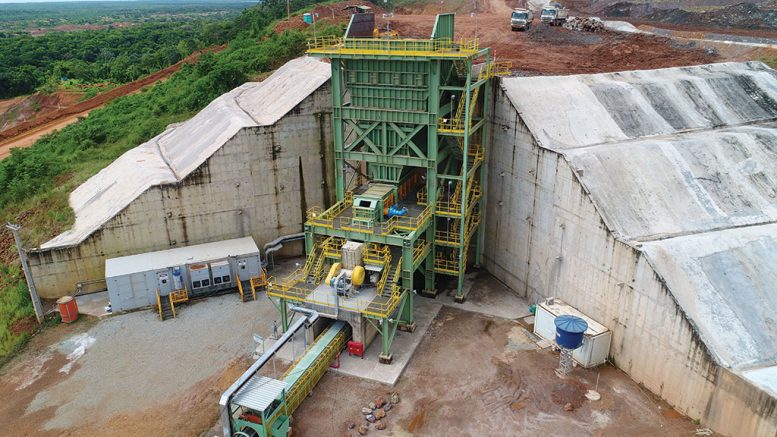
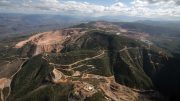
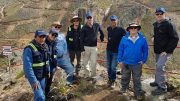
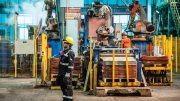
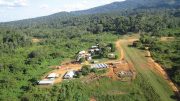
Be the first to comment on "Equinox Gold pours first gold at Aurizona in Brazil"